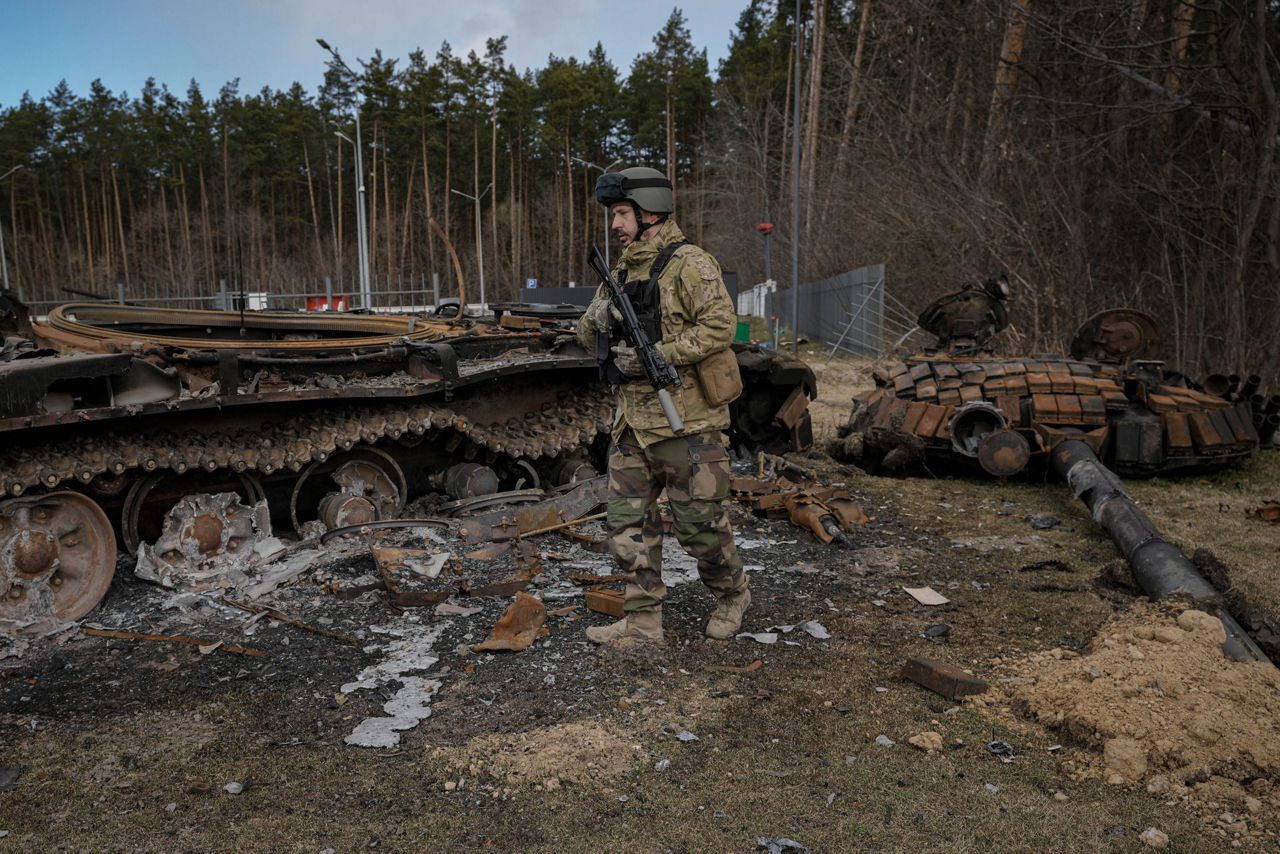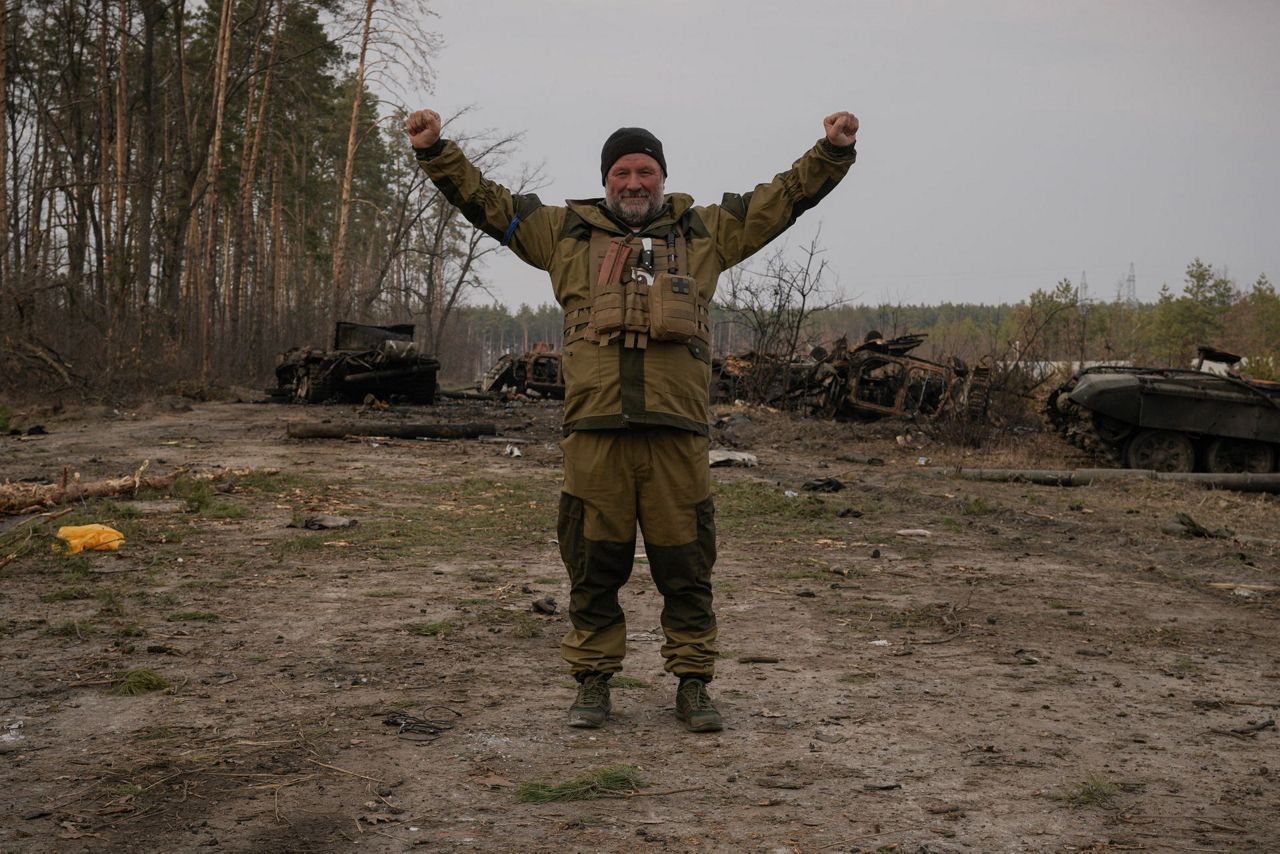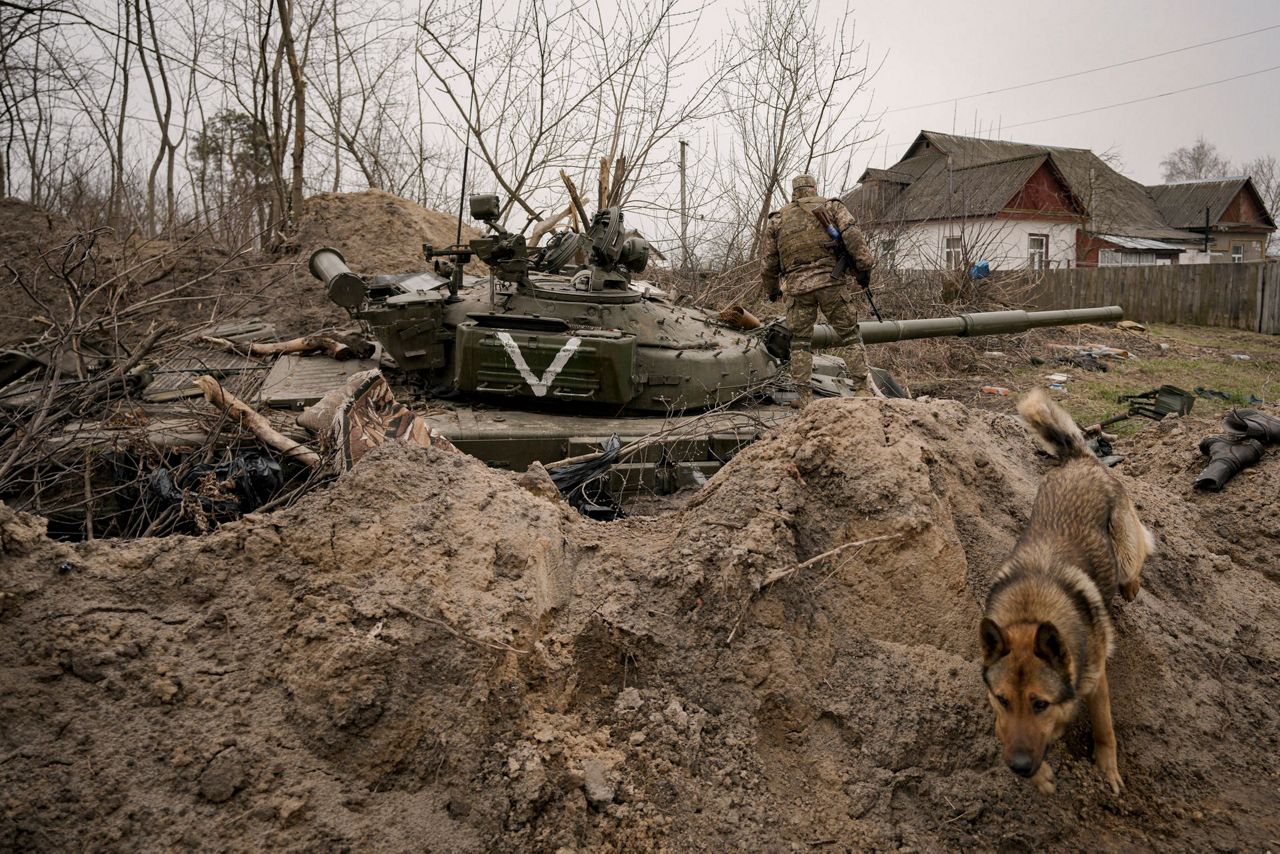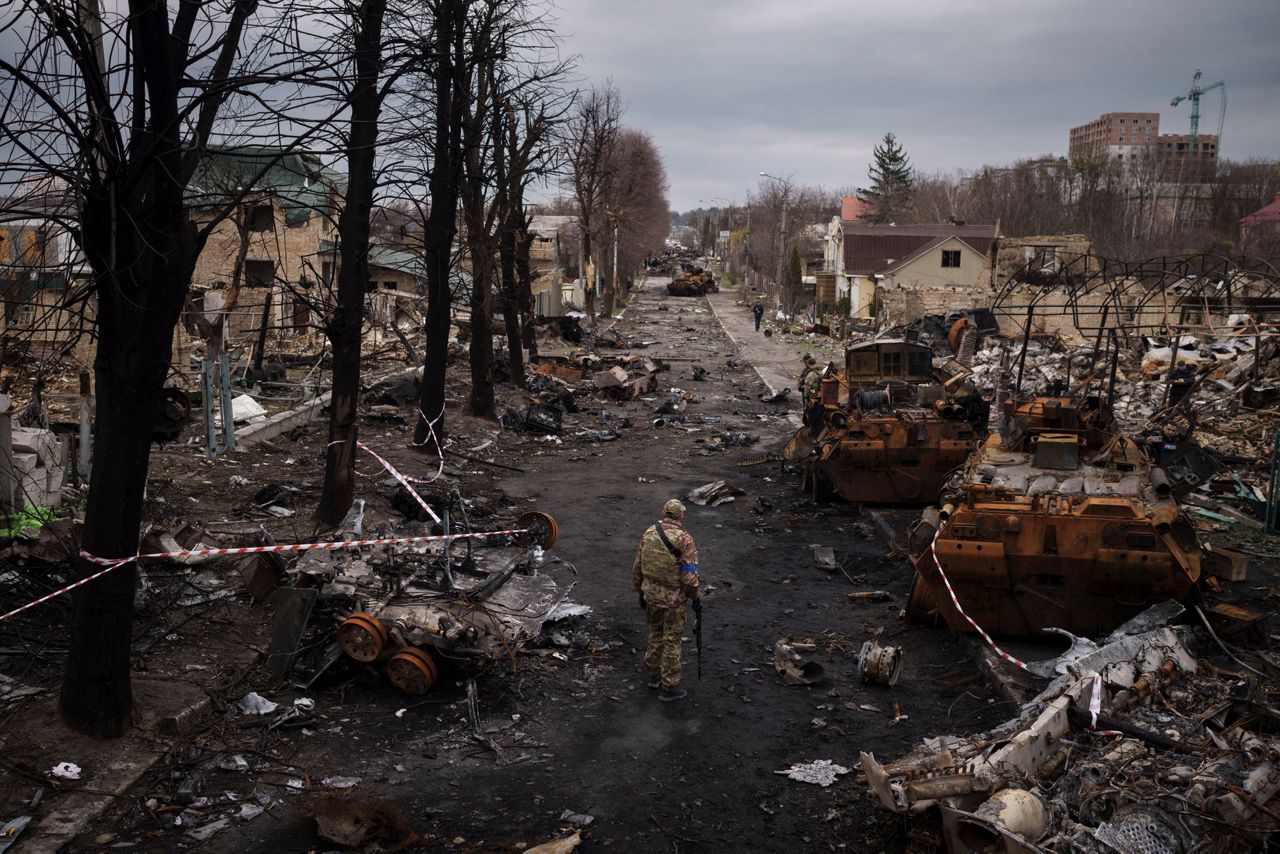With Russian hopes for storming Kyiv and other major cities in northern Ukraine dashed by stiff resistance, Moscow has refocused its efforts on the country's east, seeking to make gains there and use them to dictate its terms in talks on ending the conflict.
The Russian troops are preparing for a massive offensive in Ukraine's eastern industrial heartland known as the Donbas, and the coming weeks could determine the outcome of the war.
A look at the shift in the Russian strategy and its possible consequences.
A STALLED BLITZ
When Russian forces invaded Ukraine from the north, east and south on Feb. 24. President Vladimir Putin counted on a quick victory, similar to its 2014 annexation of Ukraine's Crimean Peninsula.
The Russian troops that pushed into Ukraine from Moscow's ally Belarus quickly reached the outskirts of Kyiv, only 75 kilometers (47 miles) south of the border, but they got bogged down facing Ukrainian defenses.
After the failed attempts to storm the capital and other big cities in the north, Russian forces tried to encircle and pummel them with artillery and airstrikes. The relentless barrages led to massive civilian casualties and damaged infrastructure, but didn't weaken Ukraine's resolve. Ukrainian forces, meanwhile, successfully used artillery and drones against Russian convoys that stretched for dozens of kilometers (miles) along highways outside Kyiv. That created massive logistical problems for the Russians.
A SHIFT IN STRATEGY
On March 29, Russia announced a drastic change in strategy, saying it would scale down military activities around Kyiv and Chernihiv, focusing instead on the “liberation” of Donbas.
A quick withdrawal from areas in the north and northeast followed, with forces pulling back to Belarus and Russia for rest and resupply.
Moscow sought to put a positive spin on what Ukrainian and Western officials described as the failure of the offensive. Russia said the action in the north was intended to tie down and weaken Ukrainian forces there and prevent them from joining troops engaged in the fighting in the east.
REDEPLOYMENT AND REGROUPING
Observers said it could take Russian troops several weeks for the troops to rest, resupply and regroup before they could launch a new attack in the east.
“Many Russian units withdrawing from northern Ukraine are likely to require significant re-equipping and refurbishment before being available to redeploy for operations in eastern Ukraine,” a tweet from the British Ministry of Defence said.
Some Western estimates said nearly a quarter of Russian units involved in the fighting had been rendered unfit for further action and would need long reequipment and resupply before being sent back into combat.
“They will be remanned because they have lost a lot of troops in the different units,” NATO Secretary-General Jens Stoltenberg said. “They will be rearmed because they have used a lot of ammunition and they will be resupplied ... to launch a new big offensive.”
FORTRESS EAST
The separatist conflict in eastern Ukraine, home to a mostly Russian-speaking population, began in 2014 shortly after the annexation of Crimea and has killed over 14,000 people. The fighting has tempered Ukrainian forces, which have gained ample combat experience and built multilayered defenses along the line of contact.
Those efforts paid off at the start of the Russian invasion, preventing the separatist forces and Russian troops from making any significant gains there despite far superior firepower.
From the start of the invasion, Moscow's key goal was to capture the Sea of Azov port of Mariupol to secure a coastal corridor to Crimea. Russian troops have besieged Mariupol for a month, reducing much of the city to rubble with artillery and air raids that killed thousands. So far, however, they have failed to win full control.
RUSSIAN PINCER MOVEMENT
Ukrainian and Western officials say the Russian plan is to encircle tens of thousands of Ukrainian troops in Donbas by moving from Izyum, near Kharkiv in the north, and from Mariupol in the south.
The timing for the offensive depends on how quickly the Russians wrap up the battle for Mariupol and free those forces for the offensive. It also will depend on how much time is needed to resupply and regroup the troops that were pulled back from Kyiv and other areas in the north.
The Washington-based Institute for the Study of War said in an analysis that the Russian troops will likely try to advance from Izyum to capture the strategic city of Slovyansk and link up with other Russian forces in Donbas in what it said “will likely prove to be the next pivotal battle of the war in Ukraine.”
Stoltenberg warned that such an eastward shift by Russia marks a “crucial phase of the war,” saying a further push in eastern and southern Ukraine is expected ”to try to take the entire Donbas and to create a land bridge to occupied Crimea."
MOSCOW'S VULNERABILITIES
During an eastern offensive, Russian forces will face the same problems that hampered their attack in the north.
Maintaining supply lines over long distances under constant Ukrainian attacks was a key challenge that eventually doomed the blitz on Kyiv and forced Moscow's retreat. Such an operation in the east could prove just as hard.
The lack of proper cohesion among different forces, the failure to fully suppress Ukrainian air defenses, and the growing popular resistance to the invasion would likely make it difficult for quick Russian gains in the east. As they seek to encircle Ukrainian troops in Donbas, Russian forces could also face attacks on their flanks.
CONDITIONS FOR PEACE
A military success in the east could offer Putin a face-saving exit from the conflict, allowing him to claim that Moscow's main goals were fulfilled. He could argue that Russia has destroyed the bulk of the Ukrainian military, liquidated the “neo-Nazi nationalist” forces and “liberated” Donbas.
Putin’s conditions for peace, however, include a demand for Ukraine to acknowledge Russia’s sovereignty over Crimea and to recognize the independence of the eastern separatists regions, something that Ukrainian President Volodymyr Zelenskyy has rejected. Zelenskyy said the issues of Crimea and Donbas could be put on hold, but Moscow wants to make them part of a deal now.
TIME AS A FACTOR
Putin badly needs a quick success in the east to find a way out of the conflict that increasingly looks like a quagmire for Moscow. Time is working against Russia, with each day of war worsening the massive economic damage from Western sanctions and draining its limited resources.
A protracted conflict could force the Kremlin to broadly engage the use of poorly trained conscripts, something it has tried to avoid, claiming that it relies squarely on volunteer soldiers. Sending fresh draftees into battle would be highly unpopular and likely fuel public discontent.
Putin's goal of freeing Ukraine from purported “neo-Nazis” has led some observers to predict that he hopes for quick gains in the east so he can announce a successful end to the campaign by May 9. That's when Russia celebrates its victory over Nazi Germany in World War II, its most important public holiday.
—-
Follow AP’s coverage of the war at https://apnews.com/hub/russia-ukraine
Copyright 2022 The Associated Press. All rights reserved. This material may not be published, broadcast, rewritten or redistributed without permission.








